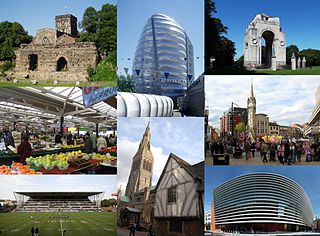
Leicester is a city and unitary authority area in the East Midlands of England, and the county town of Leicestershire. The city lies on the River Soar and close to the eastern end of the National Forest. It is to the north-east of Birmingham and Coventry, south of Nottingham, and west of Peterborough.

Leicester Square is a pedestrianised square in the West End of London, England. It was laid out in 1670 as Leicester Fields, which was named after the recently-built Leicester House, itself named for Robert Sidney, 2nd Earl of Leicester.
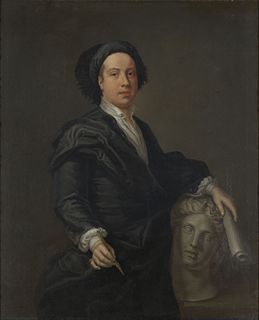
William Kent was an eminent English architect, landscape architect, painter and furniture designer of the early 18th century. He began his career as a painter, and became Principal Painter in Ordinary or court painter, but his real talent was for design in various media.

Sir William Chambers was a Scottish-Swedish architect, based in London. Among his best-known works are Somerset House, London, and the pagoda at Kew. Chambers was a founder member of the Royal Academy.

Chinatown is an ethnic enclave in the City of Westminster, London, bordering Soho to its north and west, Theatreland to the south and east. The enclave currently occupies the area in and around Gerrard Street. It contains a number of Chinese restaurants, bakeries, supermarkets, souvenir shops, and other Chinese-run businesses. The first Chinatown was located in Limehouse in the East End.

Strand is a major thoroughfare in the City of Westminster, Central London. It runs just over 3⁄4 mile (1,200 m) from Trafalgar Square eastwards to Temple Bar, where the road becomes Fleet Street inside the City of London, and is part of the A4, a main road running west from inner London.
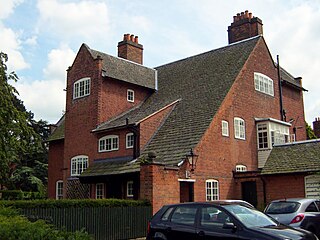
Stoneygate is part of the City of Leicester, England.
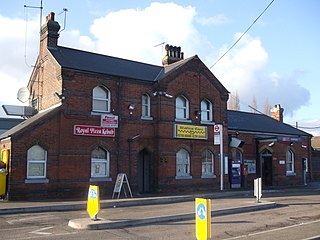
South Ockendon is a small town and Church of England parish in the Thurrock borough and unitary district in Essex in the East of England, United Kingdom. It is located on the border with Greater London, just outside the M25 motorway. The area to the north is North Ockendon.
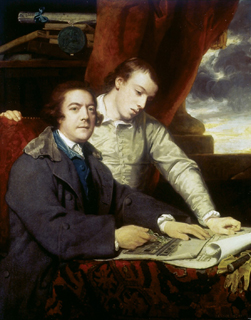
James Paine (1717–1789) was an English architect.

Leicester Central was a railway station in Leicester, England. It was situated to the west of the city centre, on Great Central Street which is today just off the inner ring road. It was closed in 1969.

Coventry Street is a short street in the West End of London, connecting Piccadilly Circus to Leicester Square. Part of the street is a section of the A4, a major road through London. It is named after the politician Henry Coventry, secretary of state to Charles II.

The Haymarket Shopping Centre is a shopping centre in the city centre of Leicester, England. It opened on 4 June 1973 as the Haymarket Centre and was the country's second shopping centre after the Bull Ring, Birmingham. It is located east of and adjacent to the Clock Tower.. The retail space is on two levels, three in the case of the two pre-existing buildings.

Ellistown is a village about 2 miles (3 km) south of Coalville in North West Leicestershire, England. It is named after Colonel Joseph Joel Ellis who died in 1885. The population from the 2011 census was included in the civil parish of Ellistown and Battleflat.

Essex House was a house that fronted the Strand in London. Originally called Leicester House, it was built around 1575 for Robert Dudley, 1st Earl of Leicester, and was renamed Essex House after being inherited by his stepson, Robert Devereux, 2nd Earl of Essex, after Leicester's death in 1588. The poet Philip Sidney lived in Leicester House for some time.

Bagworth is a village in Leicestershire, England, 9 miles (14 km) west of Leicester. The population is included in the civil parish of Bagworth and Thornton.
The Ashby and Nuneaton Joint Railway was a pre-grouping railway company in the English Midlands. Construction began in 1869 and the railway was opened in 1873. The railway was built to serve the Leicestershire coalfield. It linked Moira and Coalville Town with Nuneaton.
Moreton Morrell is a village and civil parish in the county of Warwickshire, England. It is part of the historic hundred of Kington and is located about three and a half miles north west of the village of Kineton. The settlement was first mentioned in the Domesday Book as Moreton. From at least Norman times, it has consisted of the village of Moreton and the hamlet of Morrell. The parish of Moreton Morrell is bounded on the east and south east by the Fosse Way, and consists of Little Morrell in the north, the village of Moreton Morrell, and Moreton Paddox in the south.
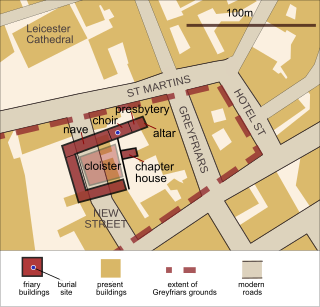
Greyfriars, Leicester, was a friary of the Order of Friars Minor, commonly known as the Franciscans, established on the west side of Leicester by 1250, and dissolved in 1538. Following dissolution the friary was demolished and the site levelled, subdivided, and developed over the following centuries. The locality has retained the name Greyfriars particularly in the streets named "Grey Friars", and the older "Friar Lane".

In British usage, the term townhouse originally refers to the town or city residence, in practice normally in London, of a member of the nobility or gentry, as opposed to their country seat, generally known as a country house or, colloquially, for the larger ones, stately home. The grandest of the London townhouses were stand-alone buildings, but many were terraced buildings.

Leicester House, Westminster, was a large town house near where Leicester Square now is, built by the Earl of Leicester and completed in 1635, later occupied by the Hanoverian Princes of Wales.

















